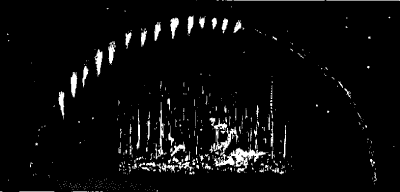 |
Science Frontiers ONLINE No. 115: Jan-Feb 1998 |
|
|
A SKY-SPANNING AURORAL ARCH
August 28, 1916. Canada.
"The usual Northern Lights were feeble, but at half past ten there grew in the sky an immense arc or ribbon of light -- practically a complete semicircle -- stretching from a point on the horizon practically due east nearly up to the zenith, but a little to the south of it, and passing down practically to the western point of the horizon. Throngs of people gathered to see it and according to their account the like was never seen before. It was a fairly uniform band of light of about the same width as the rainbow. Its definiteness was surprising, there was very little fading away at the edges; it was as if a paint brush had been drawn across the sky...For about an hour it arched the sky and during that time it was noticeably fixed relative to the earth, for some of the stars as they got higher in the east crossed it from the northern or convex side to the other."
(Anonymous; "Great Auroral Displays," Royal Astronomical Society of Canada, Journal, 10:469, 1916.)
Comment. This sharp and precisely drawn arc is so different from the swaying draperies, pulsing arcs, and "merry dancers" that characterize the usual auroral displays. We have not seen any good explanation of this phenomenon. More examples may be found in GLA2 in our catalog: Lightning, Auroras.
 | A sky-spanning auroral arch with penants seen off the coast of Maine. A more typical aurora occurred within the arch. |